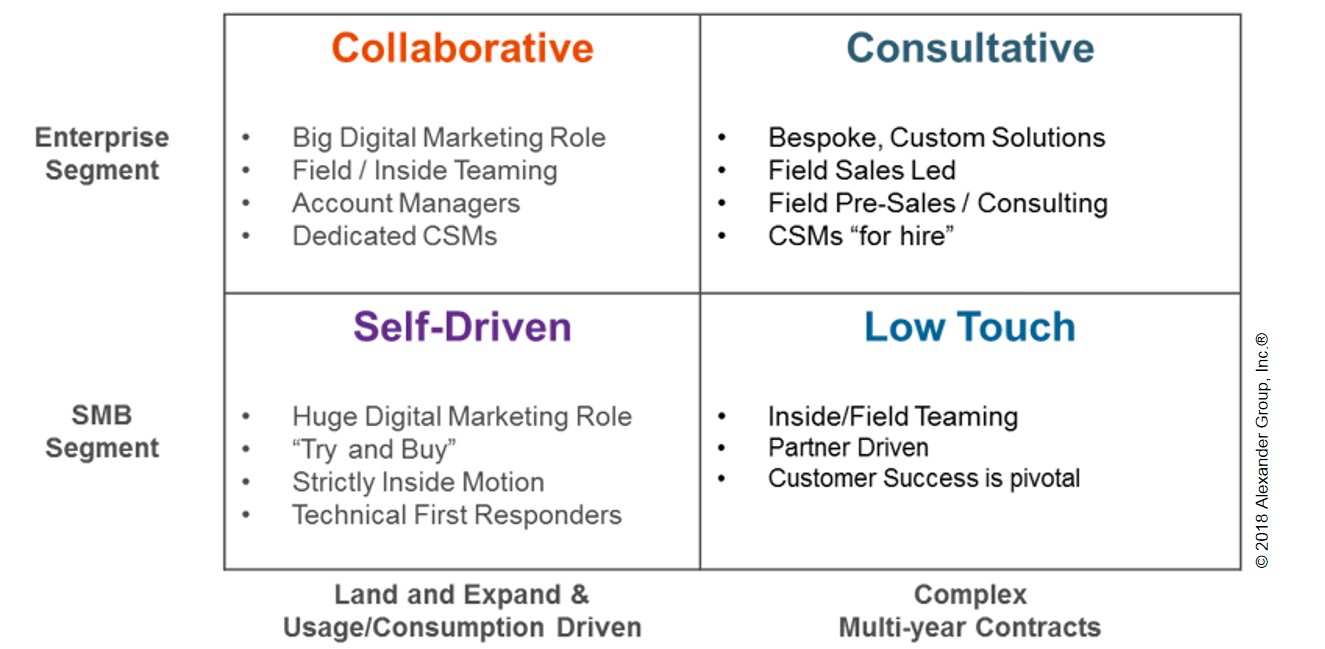Rethinking the Nature of Revenue Generation: Rise of the Revenue Leader
Today’s revenue leaders must consider all aspects of the dynamic buyer journey, from consideration, to purchase, to ongoing servicing and growth. This means revenue leaders need a perspective on account marketing and services, as well as sales. The most agile companies recognize two critical actions in addressing this challenge: update leadership models and develop unique sales motions for diverse buyer journeys. Essentially, innovative companies are rethinking the nature of revenue generation.
Recently, senior European revenue leaders gathered at Alexander Group’s European Growth Summit in London to discuss The Rise of the Revenue Leader. Attendees observed that shifting market dynamics have created new buyer journeys; revenue leaders have a responsibility–in fact a mandate–to respond to these dynamics in order to grow revenue.
Today’s revenue leaders have more scope and responsibility than the traditional sales leader of the past. Given that they must consider all aspects of the entire buyer journey, they need a perspective on account marketing and services, as well as sales. In fact, the lines between marketing, sales and services will blur further and further. Why? When buyers engage with sales deeper in their decision-making process, marketing must support maximum value in every sales conversation, and services must evolve as a revenue center to facilitate repeat, upsell and cross-sell purchases.
Consider some of the outtakes and quotes from session attendees:
“Marketing is too important to be left to the marketers.”
“Sales is comfortable handing off renewals. How do we get expansion right?”
“We are (and we must) transition from a product- to a services-led sales model.”
Summit attendees discussed the concept of stimulus and response: today’s buyer dynamics and companies’ ability to successfully respond to new buyer behaviors.
Stimulus: Today’s Buyer Dynamics
Buying behavior in the B2B environment continues to evolve and change at an accelerated rate. Emerging technologies such as artificial intelligence, IoT, machine learning and blockchain, along with disruptive business models and increased competition, have fundamentally restructured B2B buying journeys. Today’s B2B buyers use digital sources more often, collaborate with one another more actively and expect a positive experience more consistently…and yet, despite the ease of access to information, they find complex solutions overwhelming and confusing. They very much still need a sales person to help them navigate complicated purchase decisions.
Response: The Rise of the Revenue Leader
The most agile companies recognize the critical first step in addressing this challenge: updating leadership models. CEOs must consider who has accountability and responsibility for the customer and their associated revenue. Companies must reexamine traditional marketing, sales and service leadership portfolios. Increased accountability for concrete, value-based metrics including cost per lead, cost to acquire a customer (CAC) and sales growth changes the marketing team’s charter significantly. Similarly, services leaders with customer success organizations increasingly carry renewal targets, upsell/cross -sell targets and overall account growth. More and more, these two organizations support, if not outright own, areas of traditional “sales” responsibility. This allows sales to focus on more highly leveraged opportunities but does increase reliance on the adjacent organizations for success.
Response: Mapping the Sales Motion to the Buyer Journey
For the final topic of the Summit, we addressed the need for different sales motions based on the type of buyer journey. Diversity of buying journeys requires diversity of sales motions. More complicated solutions sold to more complicated customers still requires a high-touch, consultative sales motion. This approach calls for a highly experienced account executive who will own and maintain the relationship with the customer over time. This model overinvests, however, in the other three scenarios, where other motions can achieve both sales process and cost efficiencies. In the case of less complex solutions to the SMB, digital, self-driven sales models (with the support of inside sales or customer success) balance efficiency with efficacy for a large number of smaller accounts.
Conclusion: Changing Habits
Buyer behavior has changed and will continue to evolve. Leaders must respond accordingly. As one attendee shared, “We are trying to drive a huge change in commercial habits. Less telling, more conversations.” This quote summarizes a key lesson–buyers have unprecedented access to information. Are they getting the right information in the right way about your offerings? Historically, sales provided information unavailable from any other source (i.e., “telling”). The importance of that function has declined to a distant second-place if not nearly irrelevant. In fact, sales people who simply provide more information only add to the confusion. Companies must find customer-oriented, rather than function-oriented, ways to deliver information. This implies a shift in sales focus from “telling” to providing context for overloaded buyers and effectively guiding purchases to deliver customer value. This need to rethink the nature of revenue generation necessitates the Rise of the Revenue Leader.
Contact Alexander Group’s Europe practice.
